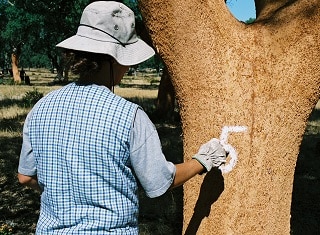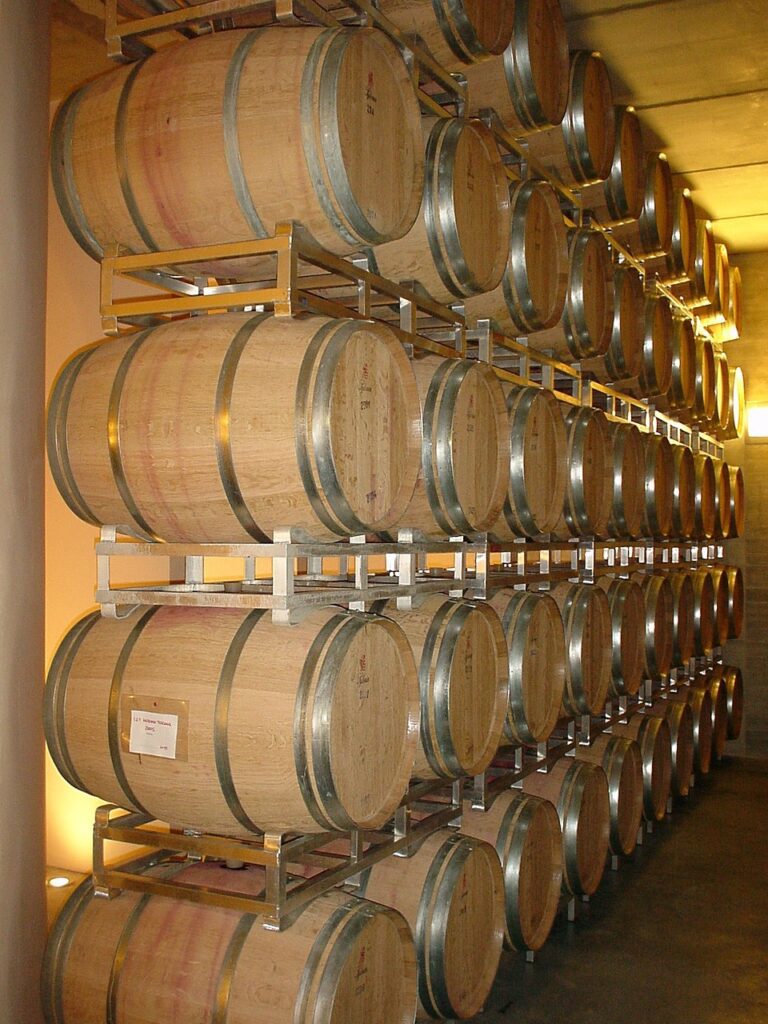Consumers do not accept off-flavours in wine! The appearance of a mouldy character is one such fault. It can be caused by different additives or cork closures.
Since the 1970s, 2,4,6-Trichloroanisol (TCA) has been a headache for the providers of cork closures for wine bottles. Advanced research by the companies involved has however addressed the problem in a major way and it will consequently be appropriate to take note of their actions. The problem solving can mainly be divided in two, namely the actions in the cork forests and the processes and/or techniques, that were applied or implemented in the cork factories. In the past cork closures were usually divided into two classes, namely the so-called natural corks and technical corks. Seeing that all cork closures are however dependent on the unique characteristics of suberin in cork bark, natural cork closures can be divided into three classes. Firstly, punched corks, where the cork is punched directly from the cork bark; secondly, moulded corks, where cork granules are pressed and bound together; and thirdly, the 1+1 cork, where a thin layer of cork is sliced and punched to the ends of an agglomerated middle where it is glued together.
TCA is a very prominent sensory compound. A drop of it in an Olympic-sized swimming pool will have a concentration of 3.75 parts per trillion, which will be observed by most people as an unpleasant taste and aroma. The cork industry consists of a few large companies, which are mainly in Portugal. The most cork forests are also in Portugal (736 000 ha or 34% of the global surface of cork forests) and Spain (510 000 ha), followed in descending order by Algeria, Italy, Morocco, Tunisia and France. The cork bottle closure companies do not own many cork trees and purchase cork bark from different providers before it is processed. Five companies, namely Amorim, Diam, MA Silva, Cork Supply and Ganau are the most important, but Amorim produces just below 50% of cork stoppers. Cork forests cover large tracts of land and depending on the climate, it will be 45 to 80 trees per hectare.
The location and climate determine the time when cork can be harvested for the first time. It is usually between 18 to 25 years. After the first harvest of cork bark, it can at the earliest be harvested again after nine years. Research over various years with the aid of drip irrigation and nutrients developed a protocol to reduce the time of the first harvest to 10 years. This must however be done without influencing the suberin as the most important component of cork bark. By also increasing the plant density of the trees it is planned to produce an additional one billion corks.
Lignin and suberin are the two most important components of cork. Lignin ensures its structural strength and suberin selects the migration of substances through the cell walls. This controls the water content of the cell and limits the penetration of pests and undesirable nutrients. The cork cells are prismatic and enclose large volumes of air. It also contains a variation of extractable substances, which can be advantageous or disadvantageous. The characteristics of suberin in the cork bark differ from those which occur in other plant species. Suberin forms the spongy quality of the bark. Other components can be removed from cork bark, without damaging the suberin and the spongy quality is retained. Damaging the suberin will however change the physical characteristics of cork bark. Suberin also supports the survival of the cork oak under dry conditions. As the tree grows, a layer of cells, known as the cambium, is formed. It is between the inner trunk and outer bark. This causes an increase in the girth of the tree. Seeing that the suberin is more prevalent in cork bark than in other plant species, the bark is extremely thick and therefore more suitable for use in cork products. The cork bark is consequently water resistant, relatively inactive and elastic, unless the structure of the bark is damaged.
Removal of the cork bark is done manually, using hatchets to remove the bark from the cambial layer. If the cambial layer is damaged, the tree can die.
Before the TCA-problem was identified, the harvested cork bark was left in the forests before it was transported to the cork factories. Fungicides were sprayed on it to prevent mould growth. The combination of halogen (chlorine, bromine and iodine) fungicides, lignin in the cork bark and micro-organisms creates ideal conditions for the formation of TCA and related products TBA (tribromoanisole) and TIA (tri-iodoanisole). These compounds can exhibit a mouldy character. This discovery initiated the TCA-problem-solving actions.
Cork is a natural product, which contains a variation of more than 150 extractable substances. All occur in low concentrations in the cork bark and can be beneficial or detrimental. Research has thus focused on the removal of detrimental substances from the cork bark. As a result of the potential negative impact that the TCA-problem posed to the Portuguese economy, the Portuguese government also subsidised the research. The first step was the implementation of a barcode to trace problems back to individual trees. Every cork supplier implemented their own quality management system(s) to monitor the process from the forest to the final cork product. They also offered staff assistance to cork producers to support cork forest managers in identifying suitable trees. After the harvest of the cork bark, the specific lots are marked with a barcode to enhance later traceability. In most cases the bottom 15 to 30 cm of the planks are cut off to prevent any contact with the soil. It must also be removed from the forests as soon as possible after the harvest to prevent soil contact. Potential TCA-contamination in the cork forests is consequently limited. Samples of the cork bark prior and after the harvest are drawn for TCA-analyses to identify its suitability.
Both Portuguese and Spanish governments spend much to ensure the sustainability of their cork industries. It is seen as part of global climate awareness, because cork oak sequesters carbon dioxide and cork products are fully biodegradable. If the three bottle closures, namely cork, plastic cork and screw closure are compared, the carbon footprint of cork is much lower (Carey, 2021).

Marking of trees imparts the traceability of TCA (Amorim).
Reference
Carey, R., 2021. A review of the cork industry’s path to TCA-free wines. Wine Business Monthly, August 2021: 26 – 35.













